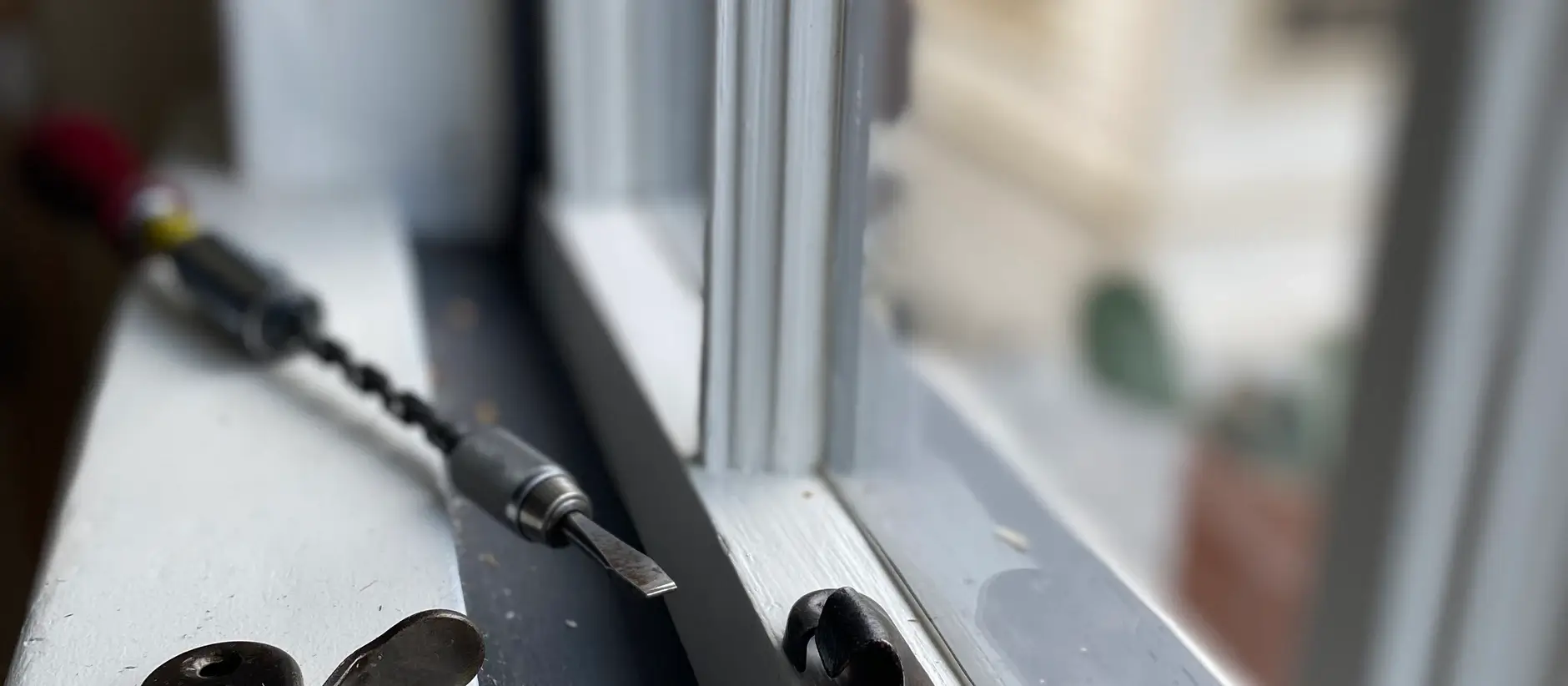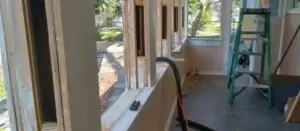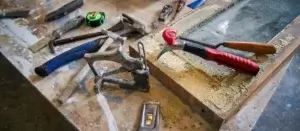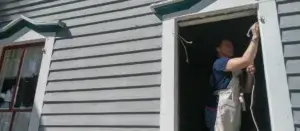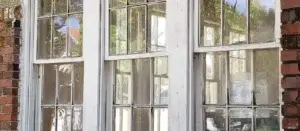Window restoration functions best as a team effort. After the initial set up, what I call the Mechanical Makeover, the work naturally splits into the the other two aspects of the work, the Sash Makeover and the Frame Makeover. As both the sash and frame are completed, they are reunited and reassembled into a functional unit. How the window functions then is a question of tuning and dialing in the details.
Tuning a window isn’t for the faint of heart. It takes judgment informed by experience and seasoning to be able to do it well. If a window hasn’t been set up properly from the beginning, tuning it at the end can be a nightmare.
What is Tuning?
Tuning is the art of making sure all the parts work together in harmony. When a guitar is out of tune, you hear it and it affects the experience. A person singing out of key draws undue attention where it’s wanted least. A window that doesn’t lock right, won’t stay open or gets stuck attracts unwanted criticism and raised eyebrows.
Is A Lock Supposed To Actually Work?
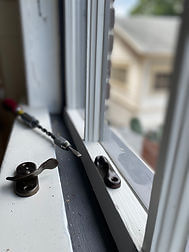
One time when Wood Window Makeover was just getting started, we had just gone through and restored all the sashes, all the frames and all the hardware. It was assembly time and someone went through and installed all of the locks – as you you would expect. However, none of the locks worked. I mean, they were on, installed and looked the part, but didn’t actually connect and secure the window. I assumed (wrongly) that whoever was responsible for installing the locks would make the connection that window lock is more than a decoration, it has to actually do the job of locking the window!
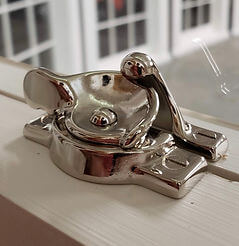
The lock problem doesn’t stop there. We’ve had to supplement missing, broken or worn out window locks with ”replicas” from suppliers online only to find out that new locks they send us don’t actually work either! They look the part, but don’t actually perform as intended! No matter how hard we tried, we could not get the two pieces of the lock to engage. This means that those who copied them from their historic counterparts were copying merely the look without regard to the function. The locks were merely decorative.
Looks Right, Performs Wrong
Many years ago we were tasked with restoring the windows and a historic cigar factory in one of Tampa’s famous historic neighborhoods called Ybor City. It turned out that, as they were, we couldn’t restore them. Why? The original windows had long since been removed and what was put back in their place were merely facades of actual windows. They looked the part, but there were no actual moving parts. There was no function. Everything was glued and screwed together. No pulleys, no weights, no ropes. Nothing. There was nothing to tune.
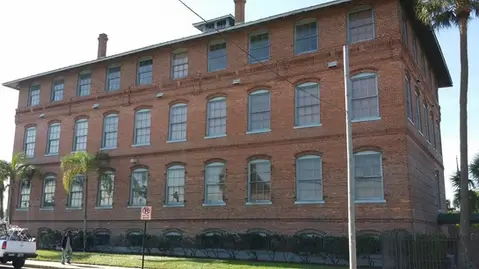
Everything was made out of cheap, interior grade finger jointed pine, including the exteriors. Because there was zero performance, the windows were rotting in place. To restore the windows, we ended up building all new archetypal units that could actually be tuned. This happens more often than you’d think. It happened at the historic Centro Espanol building we recently finished. It happened at the Coast Guard Base in Charleston, SC. It’s happening again, right now at the job I just started.
Just yesterday, as I was moving through a client’s house performing Mechanical Makeovers on all the windows, I came across another set of impossible to tune windows (video here). Having been salvaged perhaps from another house, these windows have archetypal elements like authentic wood window sashes, complete with wavy glass and a lamb’s tongue muntin profile, but are assembled in a way that demonstrates an ignorance of important details that are inherent in a complete archetypal window, a detail like, being able to remove a stop to remove the window sash from the inside. Another set of windows that look the part, but don’t perform as intended. I am going to end up rebuilding the entire units to be able to “restore” and actually tune these windows.
Tuning Begins At Set Up
I bring up the Mechanical Makeover because the actual final tuning of an historic window actually begins here, with the initial set up. It’s not enough to simply say that the window has to be taken apart and put back together. It’s how it’s taken apart and put back together that matters. And it’s this how, that takes more than either a carpenter or a painter. It takes an understanding of both carpentry and painting, how they work together and intersect on the project, to be able to do it well. A person can do the tuning on the second part of the job, after the frames and sashes are restored, but that’s not really the time to do it. The time for tuning is up front. The tuner has to know, before the sash go to the sash restorer, that the window is functioning optimally, that all the ropes for the double hung are the proper length, that the sash have full travel, that the fit of the sash relative to the frame will work for the type of weatherstripping chosen, that the locks work, the meeting rails line up, that the sash open and close properly. It’s awful to get to what could be the best part of the project, the final assembly, to learn that the windows now have to be tuned, after everything has been painted.
https://youtube.com/watch?v=m55CFZTfaaY%3Fautoplay%3D0%26mute%3D0%26controls%3D0%26origin%3Dhttps%253A%252F%252Fmanage.wix.com%26playsinline%3D1%26showinfo%3D0%26rel%3D0%26iv_load_policy%3D3%26modestbranding%3D1%26enablejsapi%3D1%26widgetid%3D1
So as window restoration is a complex fusion of carpentry and painting, who is responsible for the tuning? The carpenter or the painter? Can the painter be one who says, “I just apply the finish, how it functions is not my problem.”? Can the carpenter say, “I have it functioning as it ought, whether or not this window withstands the elements after I leave is not my problem.”? If a painter takes a window apart to be able to paint it, isn’t the painter responsible for putting it back together? And doesn’t being responsible for putting a window back together imply responsibility for tuning and optimal functionality?
I would say if it’s not one person’s individual responsibility, it’s the team’s. Granted, some will be more skilled at some tasks than others, but all team members, carpenters, painters, managers or otherwise, should understand the responsibility to end up with a highly performing, highly polished window unit and be willing to do what it takes to get it there.
Part of that understanding is also understanding what an archetypal window actually is to begin with – something easier said than done, as demonstrated above in my comments about the cigar factory facade windows and the windows on the job I’m currently on.
Tuning a window, up front as part of the Mechanical Makeover, takes into consideration the dichotomy of labor split between the sash and the frame and not only sets the dichotomy up for service, but assures that when it’s time to reassemble, reassembly happens as smoothly and effortlessly as possible. It takes carpentry, yes. It also takes painting, but not as individual, isolated movements. It takes carpentry and painting woven together into a new (or revived?) skill tapestry of its own, perhaps we could call it Archetypal Window Craft. What kind of person is it that weaves these skills together? Consider the following…
Master a movement.
Master a sequence of movements.
Master sequencing sequences.
Master sequencing those who are mastering movements.
This is the Artisan Way.
